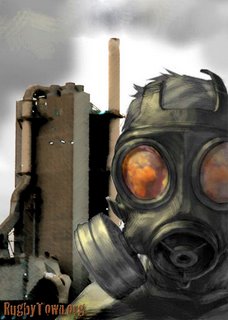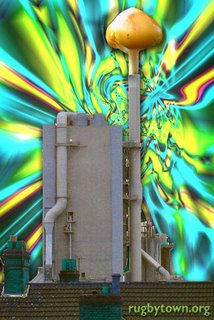 Conspiracy against Rugby residents?
Conspiracy against Rugby residents?The plot thickens! First in 1995 they try to get a Permit to operate a cement works, and then they try to plan it and build it in 1998, all without Joe Public's knowledge or interference. How come Rugby residents were not consulted? Who done it? Was it Rugby Cement, the Council officers, the Agency officers, the Member of Parliament, Mickey Mouse, the Government, or the Councillors? WHO kept Rugby residents in the dark?
RBC 3.3.06 were asked to reply to the : "considerable number of irregularities that have gone on in relation to the permitting (both in terms of planning and pollution control permitting) of the Rugby works over the years."
It was pointed out that the grant of the original IPC authorisation was flawed, not least because there has been no public consultation, nor consultation of RBC, on the application - contrary to legal requirements. (1) clarify whether or not RBC were consulted in relation to Rugby Limited's IPC application: if so (2) provide a copy of the consultation documents/ and RBC's responses (3) if no such response/s exist/s, explain why; (4) let us know what, if anything, RBC did to ensure that the public were consulted in relation to the IPC application. (Stage 1 was submitted 24.1.95; stage 2 submitted 19.7.95, stage submitted 3 2.1.96 and the authorisation eventually granted 8.9.99. The Public Register contains nothing relating to the information we are requesting.)
RBC 10.3.06: "I am not aware of irregularities in relation to permissions for the Rugby cement works. I have passed your letter to the Head of Legal and Administration, who will respond to our questions direct." (Only a mushroom can be unaware of irregularities in Rugby?)
Environment Agency 3.3.06 were asked:
"We have asked on two previous occasions for a copy of the press advertisement/s placed by Rugby Limited in the application of IPC authorisation, but we still have not received them. If it is the case that the Agency does not hold a copy of such a press advertisement, and in any event, please provide us with a copy of whatever evidence the Agency relied on in concluding that there had been a fulfilment of the Public and Local Authority consultation requirements under the IPC regime in relation to Rugby Ltd's IPC application."
Agency 8.3.06 reply : "I am now in a position to clarify matters, and I trust this response, notwithstanding the unfortunate delay, provides the information you are seeking. It appears that the Agency does not hold a copy of the press advertisement of the Rugby Limited application for IPC authorisation."
Agency 23.3.06 (thinking again perhaps?): "Please note that the Rugby IPC application was received and deemed duly made by the Agency in January 1995. At that time the statutory requirements for consultation on such applications were as follows.
* First the applicant (Rugby Ltd) has to place an advertisement in at least one local newspaper (regulation 5 of SI 1991 No 507).
* Second, the regulator (in 1995 HMIP but ultimately the EA) had to consult the persons prescribed in regulation 4 (l).
* Third, the regulator had to consider any representations made to it, within the period allowed, in determining the application. This would "obviously" include any representations made by members of the public.
It was not until April 1996 that SI 1991 No 507 was amended by SI 1996 No 667. This amendment had (in particular) the effect of requiring the applicant's advertisement to be placed on the Public Register, However, this requirement applied only in relation to applications made after that date.
There was therefore no requirement for he Agency either to hold, or to have placed on its Public Register, a copy of the newspaper advertisement, responsibility for the placing of which lay SOLELY with Rugby Ltd.
The Agency did, as you have seen from the documentation already provided to you, consult statutory consultees. I am not aware of any representations on the application having been received from members of the public. (Comment: I wonder why not???? The mind boggles - even Gareth did not say anything at all?)
To ensure that you have no complaint about the Agency's response on this subject, following your letter I arranged for a further review of Agency files to be carried out, including not just public Register material - which is seemed reasonable to assume would contain all the information you were seeking - but all other files relating to the regulation of the Rugby works.
This further search has in fact revealed some additional material. As you will see there is further correspondence between the Agency and the statutory consultees which "for some reason" was not on the Public Register file at this point. There is also information relating to the "Public Liaison Committee". This supports the conclusion that the Agency fulfilled its statutory consultation duties.
I trust this clarifies matters."
Rugby Limited 23.3.06 were then asked for the copy of the advertisement that the Agency say they MUST have placed in te newspapers in Rugby........
Watch this space for next week's exciting instalment on why Rugby is THE very best place to grow mushrooms!










